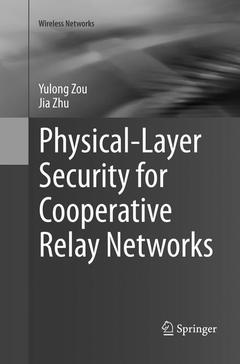Description
Physical-Layer Security for Cooperative Relay Networks , 1st ed. 2016
Wireless Networks Series
Authors: Zou Yulong, Zhu Jia
Language: English
Subjects for Physical-Layer Security for Cooperative Relay Networks :
Approximative price 116.04 €
In Print (Delivery period: 15 days).
Add to cartPublication date: 05-2018
Support: Print on demand
Approximative price 116.04 €
In Print (Delivery period: 15 days).
Add to cartPublication date: 05-2016
Support: Print on demand
Description
/li>Contents
/li>Comment
/li>
Explains how physical-layer security can secure wireless communications by exploiting the physical-layer characteristics of wireless channels
Presents practical challenges and recent advances in cooperative relaying for physical-layer security
Offers two relay selection schemes for SRT improvement
These books may interest you

SC-FDMA for Mobile Communications 172.36 €



